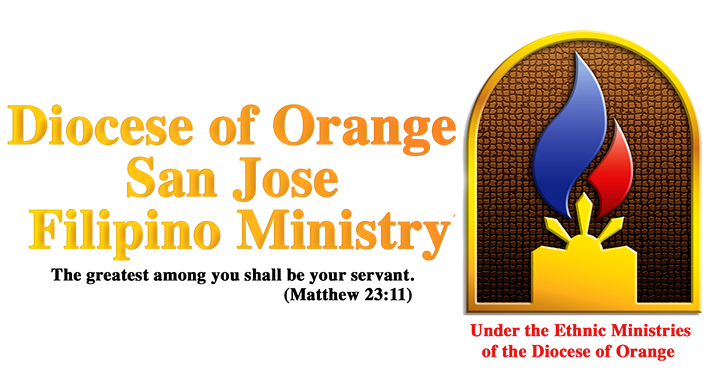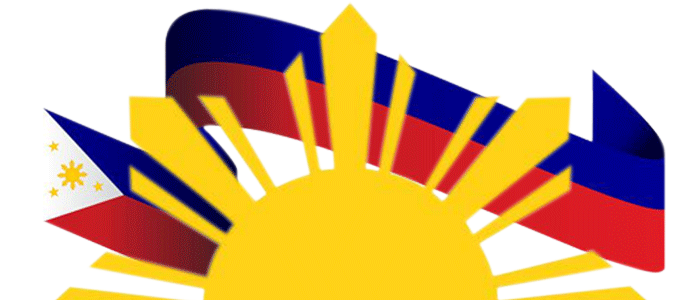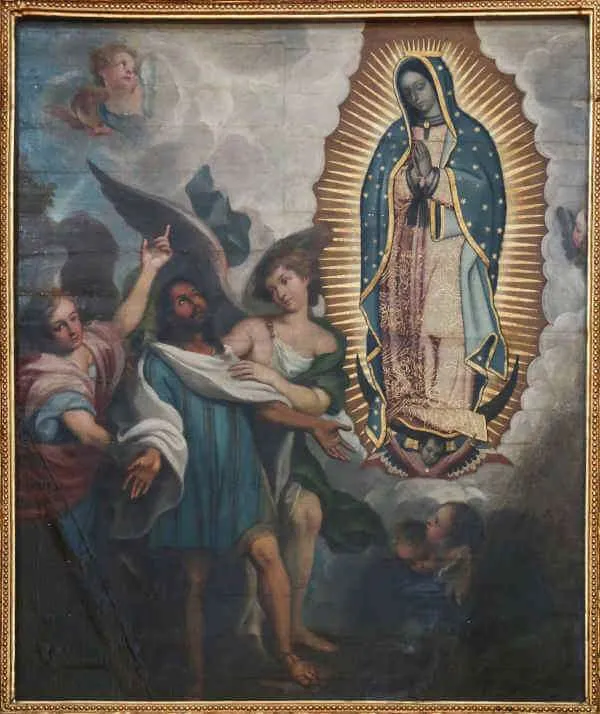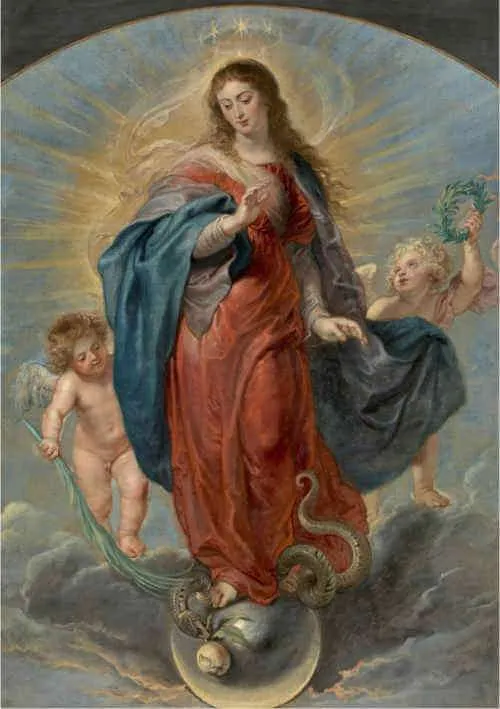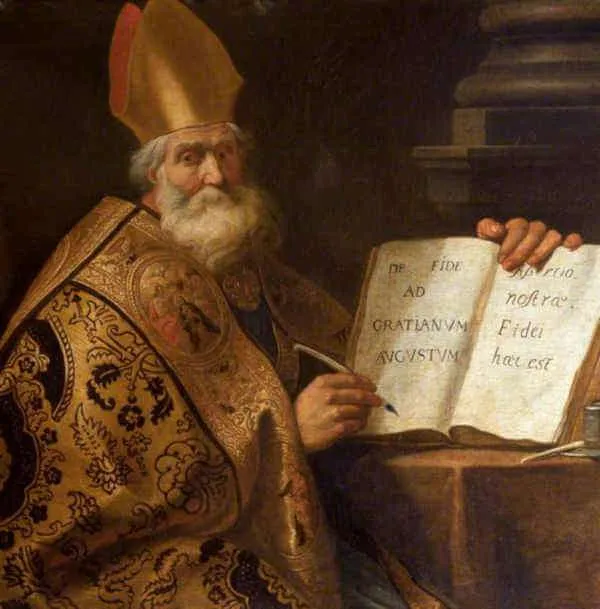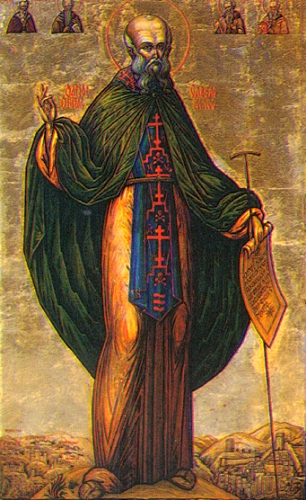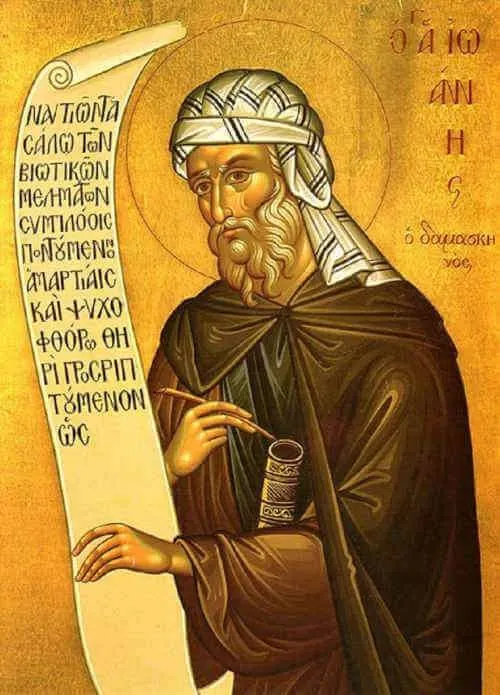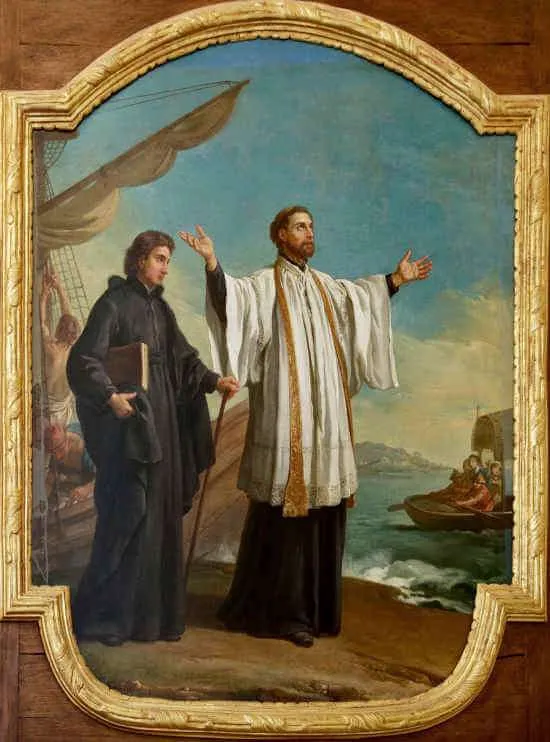Saint Juan Diego, Hermit
Patron Saint of Indigenous peoples
Juan Diego was born in the city of Cuautlitlán, just north of Tenochtitlan. He was given the name Cuauhtlatoatzin at birth, which means “the talking eagle.”
In 1521, Hernán Cortés, the Spanish conquistador, successfully defeated the Aztec Empire by capturing Tenochtitlan.
Shortly after the founding of New Spain, twelve Franciscan missionaries arrived and began to evangelize. The friars served the needs of the Spaniards but also focused their efforts on evangelizing the natives. Around the year 1524, Cuauhtlatoatzin and his wife were among those to hear the Gospel and receive baptism. They received Christian names, Juan Diego and María Lucía.
In 1528, Bishop Juan de Zumárraga arrived in Mexico City from Spain, becoming the colony’s first bishop. Under Bishop de Zumárraga, the Franciscans continued to share the Gospel with the natives, but conversions were challenging since many of the Spanish settlers treated the natives cruelly. Although the bishop and Franciscans tried to defend the rights and dignity of the indigenous, they often met with strong resistance from the Spanish colonizers. Divine intervention was needed.
After his baptism, Juan Diego began the practice of walking from his home to the Franciscan mission in Tlatelolco to receive ongoing religious instruction and attend daily Mass. On December 9, 1531, Juan was making one such journey. When he passed by Tepeyac Hill, much to his surprise, he encountered a heavenly woman who appeared as a mestiza (a mixture of Spanish and Indigenous features) and spoke in the local Nahuatl language. She announced herself as the Ever-Virgin Mary, Mother of God, and instructed Juan to go to the bishop and tell him to build a chapel on Tepeyac Hill.
Juan fulfilled her request, but the bishop was hesitant. Later that evening, as Juan was returning home, the Mother of God appeared to him again, and he informed her that he had failed to convince the bishop. He suggested that she pick someone of more importance for her mission. The Mother of God assured him that he was her choice and asked him to return to the bishop. He went the following morning and repeated the request. This time, the bishop appeared to be open but asked for a sign to prove the apparition was truly from Heaven. Juan returned to the Mother of God, and she agreed to provide a sign the following day.
The next day, December 11, Juan Diego’s uncle, Juan Bernardino, became ill. Juan Diego tended to him, so he was unable to meet his heavenly visitor at Tepeyac Hill. During the night, Juan Bernardino took a turn for the worse and was on the verge of dying. Early on the morning of December 12, Juan Diego set off for Tlatelolco to get a priest to administer the last sacraments to his uncle. Since he was in a hurry and because he had failed to return to the Mother of God on Tepeyac Hill on December 11, Juan took a different route around the hill to try to avoid her.
As he journeyed, the Mother of God appeared to him on the alternate route and asked where he was going. Juan shared the news about his uncle, explaining that his illness was the reason he had failed to show up the previous day for the promised sign. The Mother of God lovingly scolded Juan for his lack of faith, saying to him, “Am I not here, I who am your mother?” She informed him that his uncle had already recovered from his illness and then instructed Juan to climb the hill where he would find flowers not usually in bloom at that time of year.
Sure enough, on the rocky peak where normally only weeds and cacti grew, there were beautiful roses. Juan picked them and placed them in his cloak, called a tilma. When he climbed down, the Mother of God rearranged the flowers and told him to bring them to the bishop as his sign. When Juan was brought into the presence of the bishop, he opened his tilma, and the flowers fell to the ground. At the same time, an image of the Mother of God appeared on the tilma, just as she had appeared to Juan. The bishop immediately fell to his knees and believed.
The following day, Juan Diego went to check on his uncle and found him fully recovered. His uncle informed him that the Mother of God had appeared to him also and healed him. She instructed him to present himself to the bishop and tell the bishop about the apparition and his miraculous healing.
After keeping Juan Diego’s tilma in his private chapel at first, the bishop had a small chapel erected on the Tepeyac Hill. On December 26, 1531, he led a procession with the tilma to the chapel. On the way, a man in the procession was accidentally struck in the neck with an arrow that was intended to be part of a display in honor of the Mother of God. The wound was serious and his death was imminent. He was placed before the holy image, the arrow was removed, those gathered beseeched the Mother of God to heal him, and he instantaneously recovered.
This entire experience profoundly affected Juan Diego. Prior to the apparition he already had a strong faith, but afterwards it became even stronger. According to some early sources, Juan Diego’s wife had passed away in 1529, two years prior to the apparition. After the apparition, Juan received permission from the bishop to erect a small hut near the chapel where he lived for the next sixteen years as a hermit, caring for the chapel and image, and welcoming visitors who came to venerate it.
According to the official biography from the Vatican that was prepared on the occasion of Saint Juan Diego’s canonization, “Juan Diego received the grace of interior enlightenment and from that moment, he began a life dedicated to prayer and the practice of virtue and boundless love of God and neighbor.”
Today, Saint Juan Diego’s tilma is enshrined in the Basilica of Our Lady of Guadalupe in Mexico City. The tilma itself is truly miraculous. Although it was made of plant fibers that normally disintegrate after about fifteen years, it remains in perfect shape today. The image does not have any brush marks, instead appearing to have been miraculously imprinted upon the fiber.
Perhaps the greatest miracle is that this apparition helped bring about the Christianization of the Americas, especially Mexico. By appearing as a mixed race of Spanish and Indigenous, Our Lady offered an invitation to the Indigenous to accept the Gospel from the Spaniards. She bridged the gap between the two cultures and won over many souls.
As we honor Saint Juan Diego, we also anticipate the Feast of Our Lady of Guadalupe in three days, on December 12. Today, however, we ponder this humble and simple man who quickly responded to the grace of God when the Franciscan friars shared the Gospel with him and lovingly responded to the wishes of the Mother of God. His first conversion took place at baptism, but his second conversion could be said to have taken place after the apparition when he more fully dedicated himself to a life of prayer and service of God.
Ponder the amazing fact that the Ever-Virgin Mary, Mother of God, chose the humblest of her sons to be the instrument of the greatest of miracles. As you do, know that God can do great things through you if you humble yourself in imitation of Saint Juan Diego.
Source: https://mycatholic.life/saints/saints-of-the-liturgical-year/9-december-saint-juan-diego–optional-memorial
Saint Juan Diego, Hermit Read More »
